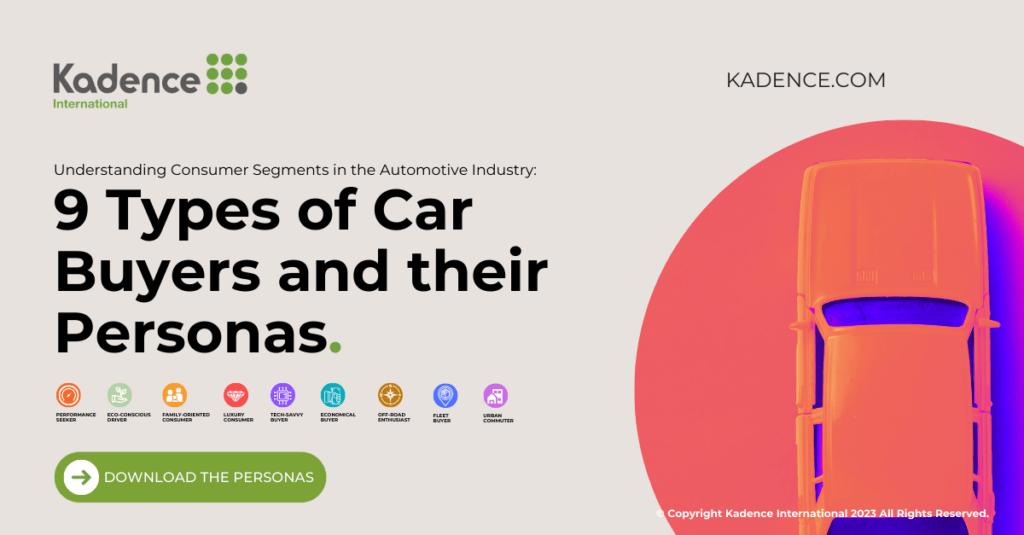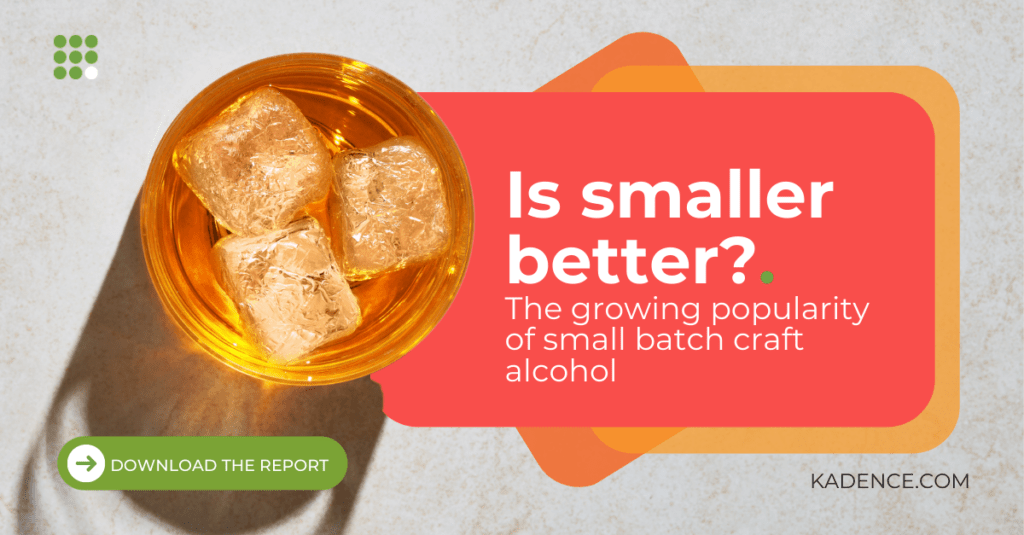As marketers, we live and breathe data. The more insights we can gather about our audiences, the more effective our strategies become. We’ve become masters at navigating the broad swaths of the population, but what about those elusive targets at the corners of our market maps? The high net worth individuals, whose motivations may differ significantly from those of an average customer, or the incredibly specific demographics like people with certain medical conditions or those within specific BMI ranges? These groups are harder to reach, and traditional strategies often fail to resonate with them.
Yet, their voices hold the key to invaluable insights. Their unique perspectives can challenge our assumptions, shed light on untapped opportunities, and lead to innovative strategies that outshine the competition. But to access these voices, we must overcome significant obstacles and rethink our approach to market research.
The Challenge
Market research among niche or hard-to-reach audiences presents a unique set of challenges. The traditional data collection and analysis methods that may work effectively on the broader consumer base often fall short when applied to these distinct demographics.
Firstly, there’s the issue of visibility. For example, individuals within specific BMI ranges or people who have undergone amputations constitute relatively small subsets of the total population. Locating these individuals, therefore, requires a significant investment of time and resources. These groups are not typically represented in standard consumer databases nor congregate on common social platforms where marketers usually source their respondents.
On the other hand, high-net-worth individuals are often invisible for different reasons. Despite their influence and economic power, they remain a somewhat elusive demographic for market researchers. They tend to guard their privacy closely and are not easily swayed by the common incentives used in market research, such as cash rewards or discounts. Their time is a valuable commodity, and they are unlikely to spend it filling out surveys or participating in focus groups without a compelling reason.
Further, the challenge extends beyond just locating these audiences; we also need to persuade them to participate in our research. This calls for a sensitive, tailored approach to engagement that respects their unique circumstances, values, and privacy concerns. For instance, individuals with certain health conditions or physical characteristics may be wary of exploitation or stigmatization, requiring extra efforts to build trust and obtain informed consent.
Understanding and surmounting these challenges is essential for marketers seeking insights from these niche demographics. It calls for creative strategies, a fine-tuned approach, and, often, a willingness to push the boundaries of traditional market research methods.
Reaching High-Net-Worth Individuals
High-net-worth individuals, by virtue of their substantial financial resources and distinct lifestyle, often hold invaluable insights for market researchers. They shape luxury markets, influence trends, and their investment decisions can signal economic shifts. Yet, their engagement in market research surveys tends to be low. Traditional incentives such as monetary rewards or discounts often do not resonate with them. The challenge lies in finding the right approach to reach and incentivize this demographic.
A Personalized Approach
It’s essential to remember that high-net-worth individuals are not a homogenous group. They have diverse interests, needs, and values. A one-size-fits-all strategy is unlikely to work. Personalizing your approach based on their interests or industries can be more effective. For instance, if you’re researching a new luxury car model, reach out to individuals known for their automotive interests. Not only are they more likely to be interested, but they will also provide more relevant insights.
Networking and Events
High-net-worth individuals often attend exclusive events, join clubs, or are part of organizations that cater to their specific interests. Getting access to these networks can provide opportunities to reach these individuals. For example, sponsoring a charity event attended by high-net-worth individuals and using that platform to conduct research can yield results.
Executive Interviews
Executive interviews offer an excellent method to gather insights from high-net-worth individuals. These interviews are usually in-depth and tailored to the interviewee, making them feel valued and respected. Furthermore, the promise of a stimulating intellectual conversation can be an attractive incentive for participation.
Ensuring Privacy
High-net-worth individuals are typically concerned about their privacy. Any research involving them must ensure the protection of their personal information. Assurances of anonymity and data security can significantly increase their willingness to participate.
Creating Value
Finally, incentives need to extend beyond monetary rewards. Offering an exclusive first look at a new product, access to exclusive events, or even the opportunity to influence a product they care about can motivate participation.
Connecting with Very Specific Demographics
Locating and connecting with specific demographics requires a nuanced and respectful approach. These individuals often represent smaller segments of the population, and their unique circumstances make them more challenging to locate and engage with. However, meaningful connections can be established with the proper methods and a sensitive approach.
Community Engagement
Community engagement is one of the most effective ways to connect with these specific demographics. This may involve working with organizations, support groups, or online communities that cater to these individuals. For example, if you’re targeting people within a specific BMI range, consider partnering with health and wellness organizations that cater to this demographic.
Engaging with these communities helps locate your target audience and fosters trust. By aligning with organizations they know and respect, you demonstrate that you understand and respect their unique experiences.
Online Forums and Social Media
Many individuals with shared experiences or characteristics often find community and support online. From Reddit threads to Facebook groups, there are numerous online spaces where these communities come together. Conducting research in these spaces requires careful navigation, respecting community rules, and maintaining an open, transparent communication style.
Healthcare Partnerships
Partnering with healthcare providers is another effective way to reach specific demographics, especially those related to health conditions or physical characteristics. For instance, clinics and rehabilitation centers can provide access to amputees. It’s essential, however, to navigate these partnerships ethically and ensure that the privacy and rights of individuals are protected.
Trust-Building and Consent
Regardless of the method used to reach these specific demographics, building trust and obtaining informed consent is critical. This means being transparent about your research, why you’re doing it, how the data will be used, and ensuring that participation is entirely voluntary. Building this trust will make individuals more likely to share their experiences and provide the valuable insights you seek.
Remember, specific demographics require specific approaches. A keen understanding of their unique experiences and a commitment to ethical research practices can go a long way in connecting with these individuals.
Leveraging Technology and Social Media
Leveraging the power of technology and social media can significantly enhance our efforts to reach niche and hard-to-reach audiences. The availability of vast amounts of data, advanced analytics, and platforms that connect millions of people worldwide provide unprecedented opportunities for market researchers.
Data Analytics and AI
Sophisticated data analytics and artificial intelligence (AI) can comb through large data sets to identify patterns and characteristics that human analysts might miss. AI algorithms can help us identify potential survey participants by analyzing online behavior, preferences, and interactions. For example, an individual regularly engaging with posts on high-end fashion brands on Instagram might indicate a high net worth. Similarly, participation in online forums or communities dedicated to weight management could help identify people within a specific BMI range.
Social Media Advertising
Social media platforms are effective tools to target specific demographic segments based on various criteria. For instance, Facebook’s targeted advertising allows us to reach users based on multiple factors, including their interests, online behaviors, and personal characteristics. A carefully crafted ad campaign could target high-net-worth individuals by focusing on luxury interests or target specific health communities based on their interactions with related content.
Geolocation Services
Geolocation technology can also aid in reaching niche audiences. It can provide valuable information about individuals’ locations, which can be crucial in some market research. For example, high-net-worth individuals often frequent certain geographic areas—luxury shopping districts, upscale neighborhoods, exclusive clubs—which can be identified through geolocation data. Also, read “Why geofencing surveys are the future of market research.”
Privacy Considerations
While leveraging technology and social media can significantly enhance our reach, it’s essential to remember the importance of privacy and data security. All data collection and usage should adhere to applicable privacy laws and regulations, and potential participants should be informed about how their data will be used.
By harnessing the power of technology and social media, market researchers can effectively locate and engage with niche audiences, turning the vast digital landscape into a fertile ground for valuable insights.
Partnerships and Collaborations
Partnerships and collaborations provide a significant avenue to reach hard-to-reach demographics. Aligning with organizations, influencers, or brands already trusted by your target demographic can help break down barriers and establish a connection with these niche audiences. This strategy can not only assist you in locating your target demographic but also imbue your research with credibility and trust.
Non-Profit and Advocacy Groups
Non-profit and advocacy groups often have established relationships with the demographics they serve. For instance, organizations focused on amputees already have the trust of these individuals and understand their needs and concerns. Collaborating with these organizations can provide invaluable insights and improve the response rate among these specific demographics.
Industry Partnerships
For high-net-worth individuals, partnerships with brands, companies, or services that cater to this demographic can be effective. Luxury brands, investment firms, or exclusive clubs often have direct access to high-net-worth individuals and understand their needs and desires. Coordinating your research efforts with these entities can provide opportunities to connect with this demographic.
Influencer Collaborations
In the age of social media, influencers wield substantial power. A well-respected influencer can sway the opinions and behaviors of their followers. If an influencer resonates with your target demographic, a collaboration could effectively reach your audience. The influencer can encourage their followers to participate in your research, lending their credibility to your project.
While partnerships and collaborations can significantly boost your research efforts, it’s essential to approach them responsibly. Be transparent about your research objectives and methods, and respect the privacy and rights of all involved. This will ensure a fruitful collaboration and protect the integrity of your research.
Ethics and Responsibility in Research
While this article focuses on strategies to reach niche audiences, it is equally important to highlight the ethical considerations in conducting such research. Ensuring the ethical integrity of your research protects the rights and privacy of your respondents and enhances the credibility and value of your research findings.
Informed Consent
Informed consent is fundamental in conducting any research, particularly when dealing with niche or hard-to-reach audiences. Potential participants should be clearly informed about the nature of the study, the type of data being collected, how it will be used, and their right to withdraw at any point. This process is about adhering to ethical guidelines and fosters trust between the researcher and the participants.
Privacy and Confidentiality
Assurances of privacy and confidentiality are critical when dealing with high-net-worth individuals or sensitive demographics like individuals with a disability or medical conditions. Researchers must ensure that the data collected is securely stored and used responsibly. When reporting findings, care should be taken to present data so that individuals can only be identified if they have explicitly given permission to do so.
Respect and Sensitivity
Respect and sensitivity towards all participants, regardless of their demographic, is a must. This is particularly true for researchers engaging with individuals who may feel vulnerable or marginalized. Researchers should strive to create an environment where participants feel comfortable and safe to express their thoughts and experiences.
Fair Compensation
While high-net-worth individuals might not be incentivized by traditional compensations, other hard-to-reach audiences may require incentives to participate. In such cases, it’s essential to offer fair and appropriate compensation. Researchers should strive for a balance where the compensation is attractive enough to incentivize participation but not so high that it might unduly influence individuals to participate against their better judgment.
Final Thoughts
Navigating the complexities and challenges of connecting with niche and hard-to-reach audiences is no easy task. However, if done right, it opens the door to a goldmine of unique insights and perspectives, often overlooked in conventional market research.
The process may involve digging deeper, pushing boundaries, and embracing innovative techniques. It requires us to step outside our comfort zones and rethink our conventional approaches. It’s not about following the crowd but about charting your own course.
In my view, the diversity and uniqueness of these audiences are what make them truly valuable. They can provide fresh viewpoints and ideas that disrupt norms, challenge established practices, and drive innovation. Not only that, these unique insights can set a brand apart, fuel growth, and spark the next big breakthrough.
Yes, reaching out to these elusive demographics can be a challenge. But it’s a challenge worth embracing. After all, the greatest rewards often lie in the paths less traveled.
Navigating the complexities of reaching niche audiences doesn’t have to be a solo venture. With Kadence International’s 30 years of market research expertise, we can unlock invaluable insights together. Contact us today, and let’s turn your unique audience challenges into your next big breakthrough.
Get regular insights
Keep up to date with the latest insights from our research as well as all our company news in our free monthly newsletter.





 Senior Marketing Executive
Senior Marketing Executive Sales & Marketing
Sales & Marketing General Manager PR -Internal Communications & Government Affairs
General Manager PR -Internal Communications & Government Affairs Vital Strategies
Vital Strategies
 Customer Intelligence Director
Customer Intelligence Director